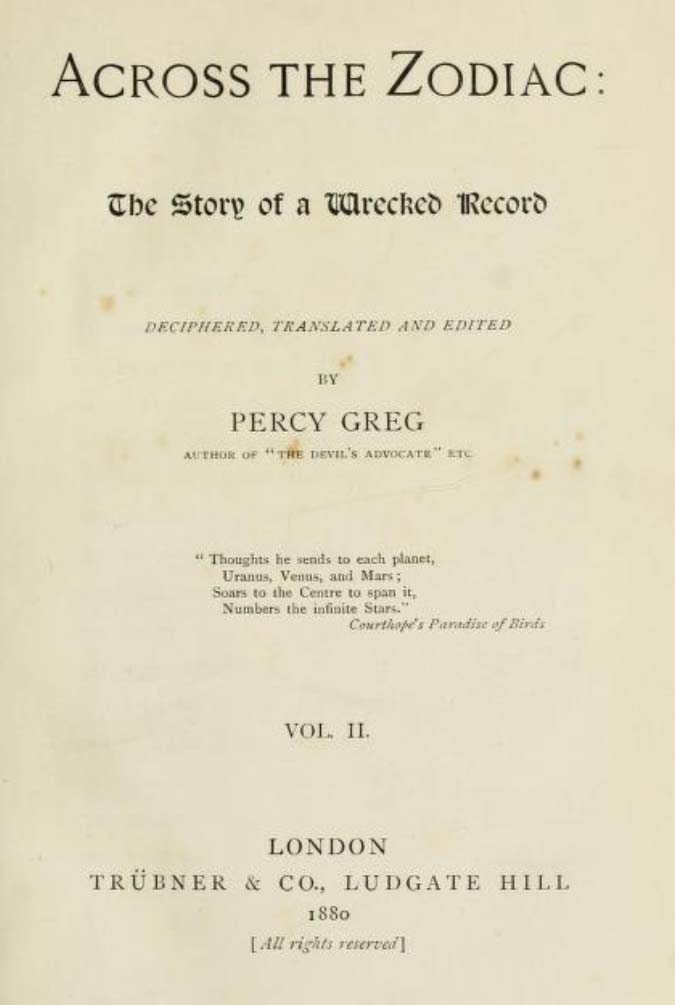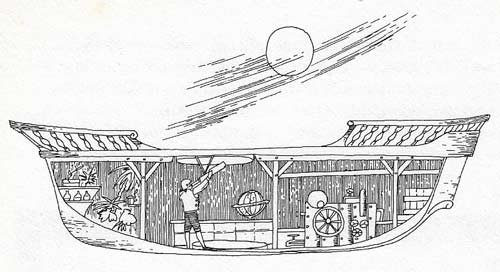Greg, Percy (1836–1889)

Figure 1. The title page of the first edition of Percy Greg's novel Across the Zodiac (1880).

Figure 2. In Greg's story, the hero travels to Mars in a huge spaceship, propelled by an antigravity device called "apergy".
Percy Greg was an English poet, novelist, and historian who wrote a number of science fiction tales, including the two-volume novel Across the Zodiac: The Story of a Wrecked Record (1880). This was possibly the first story to involve a powered spaceship (the craft in Jules Verne's early Moon yarn having being shot out of a huge cannon).
In his tale, Greg describes a propulsion system based on "apergy" – an antigravity-like force – which provides the means for a voyage to Mars. The spaceship, a huge thing with three-foot-thick walls, "resembled the form of an antique Dutch East-Indiaman" (Figure 2). The deck and keel were "absolutely flat, and each one hundred feet in length and fifty in breadth, the height of the vessel being abour twenty feet." The apergy receptacle was placed above the generator in the center of the ship. From them "descended right through the floor a conducting bar in an antapergic sheet, so divided that without separating it from the upper portion the lower might revolve in any direction through an angle of twenty minutes." This sheath is used to direct "a stream of repulsive force" against the Sun or any other body.
The most noteworthy fact is that this ship is used to go to Mars, which had finally begun to assume the importance to science-fiction writers that it deserved. This was a result of increasing knowledge about the planet and the development of theories of the origin of the Solar System, which made Mars seem especially interesting. Greg wrote at the time of the discovery of Mars's "canals," and of the planet's two satellites ( which he described in his novel). New data made Mars seem like an older Earth, and therefore a potential home for a more advanced race of intelligent beings.
Greg gives a haunting description of the planet. "The seas are not so much blue as grey. Masses of land reflected a light between yellow and orange indicating . . . that orange must be as much the predominant color of vegetation as green on Earth . . . . The sky, instead of the brilliant azure of a similar latitude on Earth, presented to my eye a vault of pale green . . . . The lower slopes [of a mountain] were entirely clothed with yellow or reddish foliage."
Arriving on a Lowellian Mars, the protagonist finds a race of technically advanced humanoids, one of whom he marries (qualifying the book perhaps for another SF first) though it all ends unhappily when his martian bride is killed.


